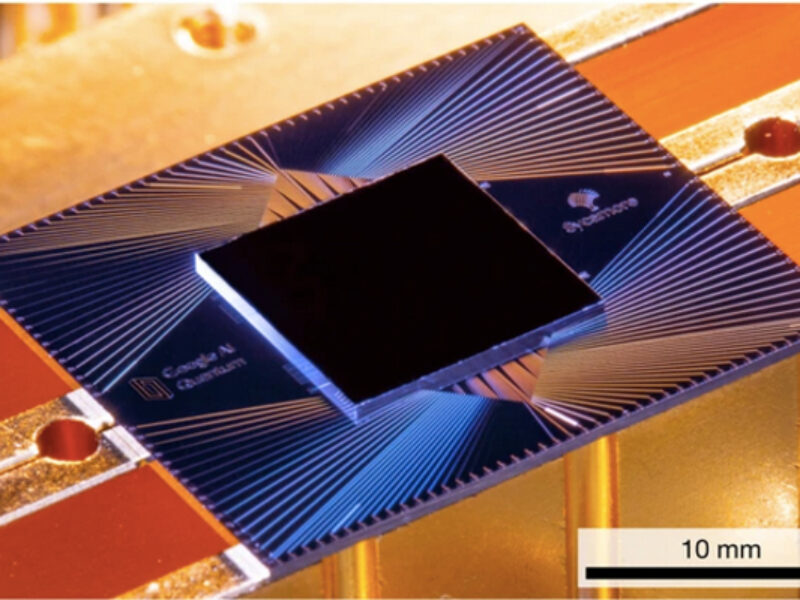
Google processor achieves quantum supremacy
This ability to use quantum computing to achieve results beyond the reach of classical computing is called ‘supremacy’ and has been the theoretical advantage of quantum computing since research into the topic began. Google’s results were reported in Nature.
The Sycamore quantum computer is fully programmable and can run general-purpose quantum algorithms. After the test and benchmarking phase of development reported here the team has been preparing applications in the areas of quantum physics simulation and quantum chemistry, as well as in machine learning.
The Nature paper relates that Sycamore, designed and fabricated by Google, that comprises a two-dimensional array of 54 transmon qubits, with each qubit tunably coupled to its four nearest neighbours. The qubits are arranged in a 9 by 6 staggered array.
One of the breakthrough developments in this design of qubit assembly is the adjustable coupler that controls connection to each nearest neighbour, the paper states.
The qubits are made of supercooled Josephson Junctions with aluminium for metallization and indium for bump-bonds between two silicon wafers. The chip is wire-bonded to a superconducting circuit board and operated at below 20mK. The processor is connected to room-temperature equipment that synthesizes control signals and reads the qubits status.
Next: What next?
Single-qubit gates are formed by driving 25ns microwave pulses into a given qubit. These pulses are resonant with the qubit frequency with the qubit-to-qubit coupling switched off, the researchers report. Two-qubit entangled gates are formed by coupling neighbour qubits that are in resonance with a 20MHz coupling for 12ns. This allows the qubits to swap excitations, the Nature paper says.
The paper goes on to describe the testing of simplified circuits of from 12 up to 53 qubits – one of the qubits in the array was found not to work correctly. Once the processor was found to be performing correctly by cross checking with classical simulations the team ran hard circuits using 53 qubits and increasing depth, until it went beyond the point where classical calculation was feasible.
Supercooled processors have thus reached the era of “quantum supremacy,” the research team concludes.
The researchers said they expect quantum computational power will grow at a double exponential rate and probably follow something akin to Moore’s Law with a doubling of computational performance every few years but that quantum error correction would need to be addressed.
The Sycamore architecture is forward compatible with quantum error correction said John Martinis and Sergio Boixo, a couple of senior scientists at Google, in the Google AI blog. “We see our 54-qubit Sycamore processor as the first in a series of ever more powerful quantum processors,” they said.
Google said it now plans to build a fault-tolerant quantum computer as quickly as possible.
Related links and articles:
Nature paper: Quantum supremacy using a programmable superconducting processor
News articles:
IBM provides Germany with quantum computer
Quantum computing near and disruptive, warns academic at Davos
IBM taps European design for first commercial quantum computer
Three components for quantum computers integrated on one chip
Leti 300mm fab extended for PCM, ReRAM, quantum computing
 If you enjoyed this article, you will like the following ones: don't miss them by subscribing to :
eeNews on Google News
If you enjoyed this article, you will like the following ones: don't miss them by subscribing to :
eeNews on Google News




